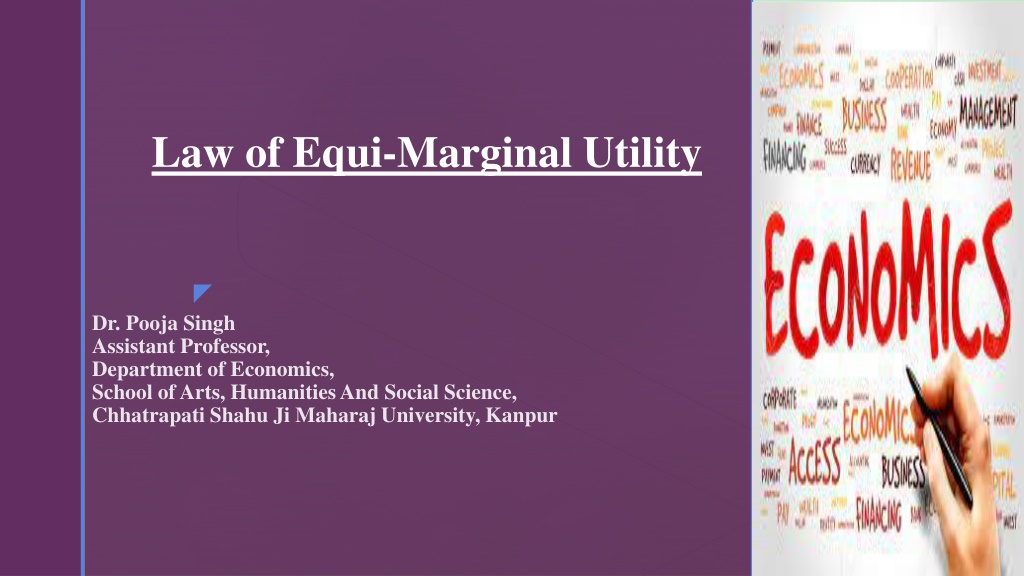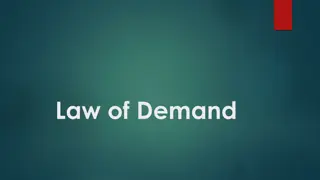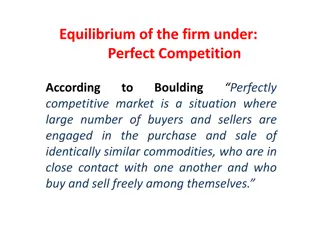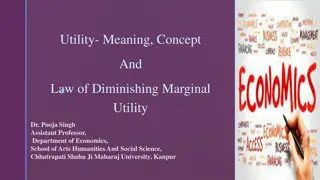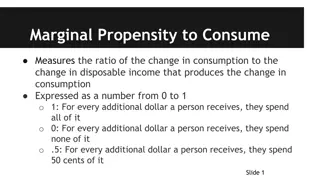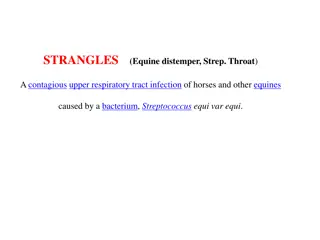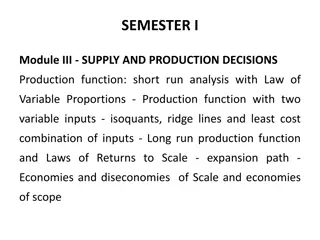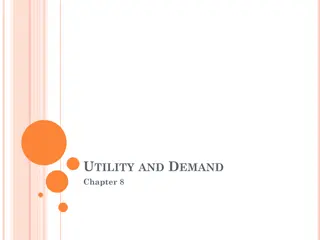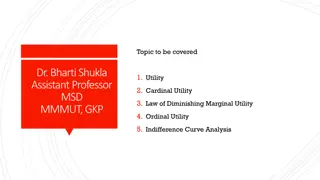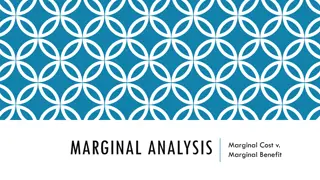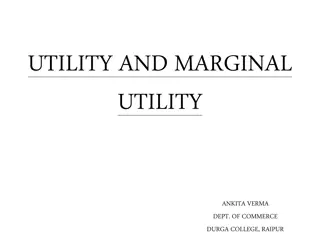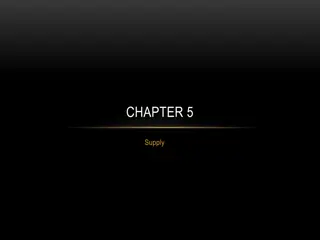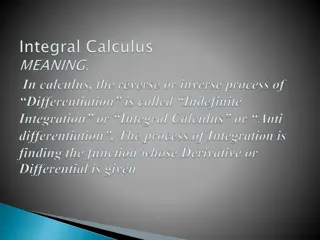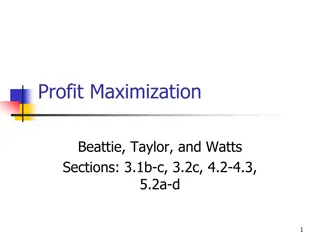Understanding the Law of Equi-Marginal Utility in Economics
Law of Equi-Marginal Utility, propounded by Hermann Heinrich Gossen, explains how consumers distribute their income among different goods to maximize satisfaction. It involves equalizing the marginal utility per unit of money spent across various goods. The law is based on the assumptions of rational consumer behavior, knowledge of market commodities, cardinal measurability of utility, and substitutability of chosen commodities. Through examples and calculations, the concept is illustrated for a better understanding of consumer decision-making.
Download Presentation

Please find below an Image/Link to download the presentation.
The content on the website is provided AS IS for your information and personal use only. It may not be sold, licensed, or shared on other websites without obtaining consent from the author. Download presentation by click this link. If you encounter any issues during the download, it is possible that the publisher has removed the file from their server.
E N D
Presentation Transcript
Law of Equi-Marginal Utility Dr. Pooja Singh Assistant Professor, Department of Economics, School of Arts, Humanities And Social Science, Chhatrapati Shahu Ji Maharaj University, Kanpur
Law of Equi-Marginal Utility Law of Equi-Marginal Utility Propounded by Hermann Heinrich Gossen (1810-1858) Marginal Utility from A Marginal Utility from B A B Also Known as Law of Substitution or Law of Mximum Satisfaction Also Known as Gossen s Second Law Dr. Pooja Singh, Assistant Professor, Department of Economics, School of Arts, Humanities And Social Science, Chhatrapati Shahu Ji Maharaj University, Kanpur
Law of Equi-Marginal Utility According to Marshall, 'If a person has a thing which can be put to several uses, he will distribute it among these uses in such a way that it has the same marginal utility in all . A consumer, generally is confronted with the problem of buying from among several goods and services, given his limited income. This law explains the behavior of a consumer in distributing his limited income among various goods and services as to obtain maximum satisfaction. MUX PX =MUY = MUm PY Where , MUx = Marginal Utility of Good x MUy= Marginal Utility of Good y Px = Price of Good x Py = Price of Good y MUm = Marginal Utility of Money Dr. Pooja Singh, Assistant Professor, Department of Economics, School of Arts, Humanities And Social Science, Chhatrapati Shahu Ji Maharaj University, Kanpur
Law of Equi-Marginal Utility Assumptions- 1) The consumer should behave rationally. 2) He has full knowledge about the commodities i.e their attributes, price, etc. in the market. 3) Utility is measurable cardinally in terms of utils. 4) Commodities that are chosen are divisible and substitutable. Dr. Pooja Singh, Assistant Professor, Department of Economics, School of Arts, Humanities And Social Science, Chhatrapati Shahu Ji Maharaj University, Kanpur
Law of Equi-Marginal Utility For Example: A man purchases two goods X and Y whose prices are PXand PY, respectively. MUX PX MUY PY Unit Consumed Unit Consumed MUx MUy 1 10 11 1 40 55 2 9 10 2 36 50 Let Px= 4 3 8 6 3 32 30 Let Py= 5 4 7 4 4 28 20 5 6 3 5 24 15 6 5 1 6 20 5 By purchasing these combinations of X and Y (= Rs. 4 x 5 + Rs. 5 x 3) gets maximum satisfaction [10 + 9 + 8 + 7 + 6] + [11 + 10 + 6] = 67 units. Purchase of any other combination other than this involves lower volume of satisfaction. Dr. Pooja Singh, Assistant Professor, Department of Economics, School of Arts, Humanities And Social Science, Chhatrapati Shahu Ji Maharaj University, Kanpur
Law of Equi-Marginal Utility consumer maximizes his total utility by spending OD amount on good X and O D amount on good Y. the consumer equalizes marginal utilities per rupee spent on X and Y at point E (i.e., MUX/PX= MUY/PY= ED). No other combination will give greater satisfaction. Dr. Pooja Singh, Assistant Professor, Department of Economics, School of Arts, Humanities And Social Science, Chhatrapati Shahu Ji Maharaj University, Kanpur
Limitations- The law of equi-marginal utility is based on the measurability of utility in cardinal numbers. This law assumes that the consumer acts rationally. No consumer, in fact, purchases commodity in accordance with this principle of substitution. This law cannot be applied in the case of indivisible commodities like motor car, refrigerator, etc. Since these commodities are not divisible into smaller units, the law may seem to be inoperative.
References Dwivedi D N, Managerial Economics, Vikas Publishing House Pvt. Ltd, 2006
